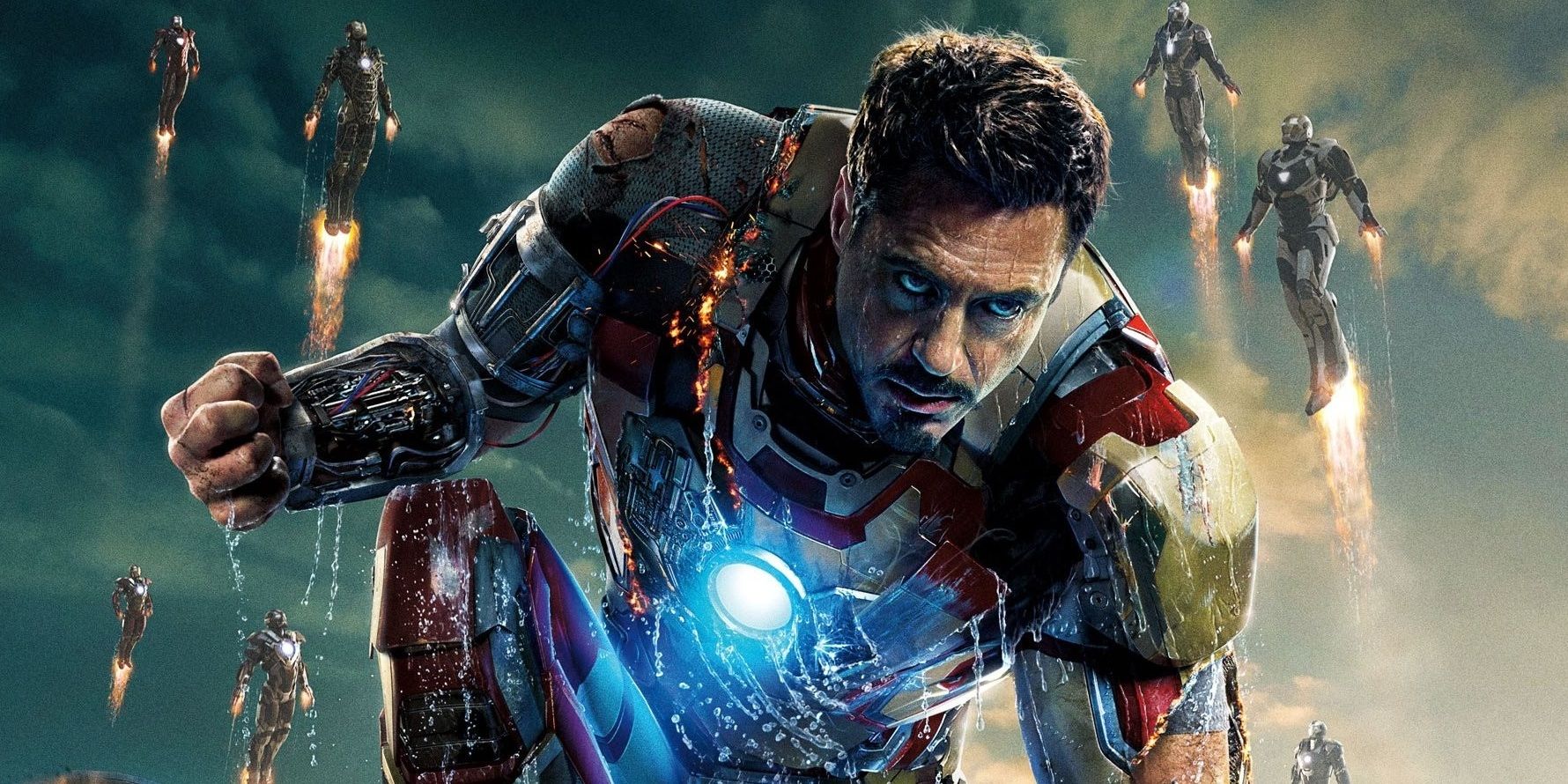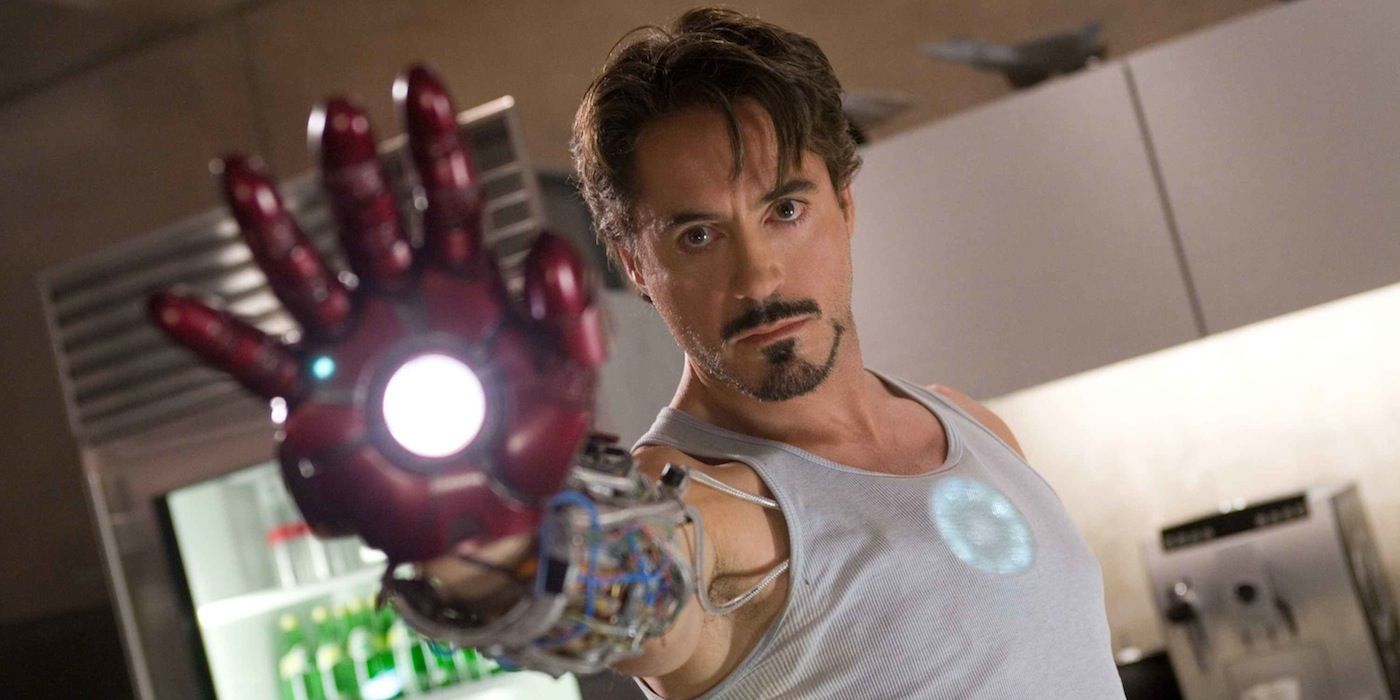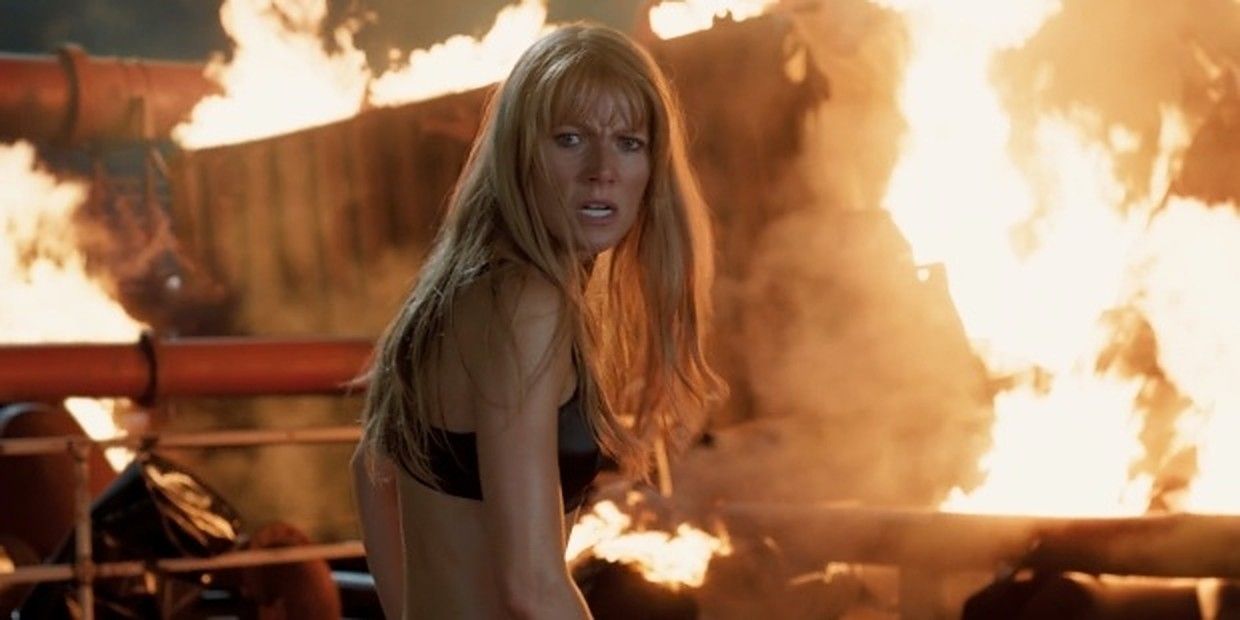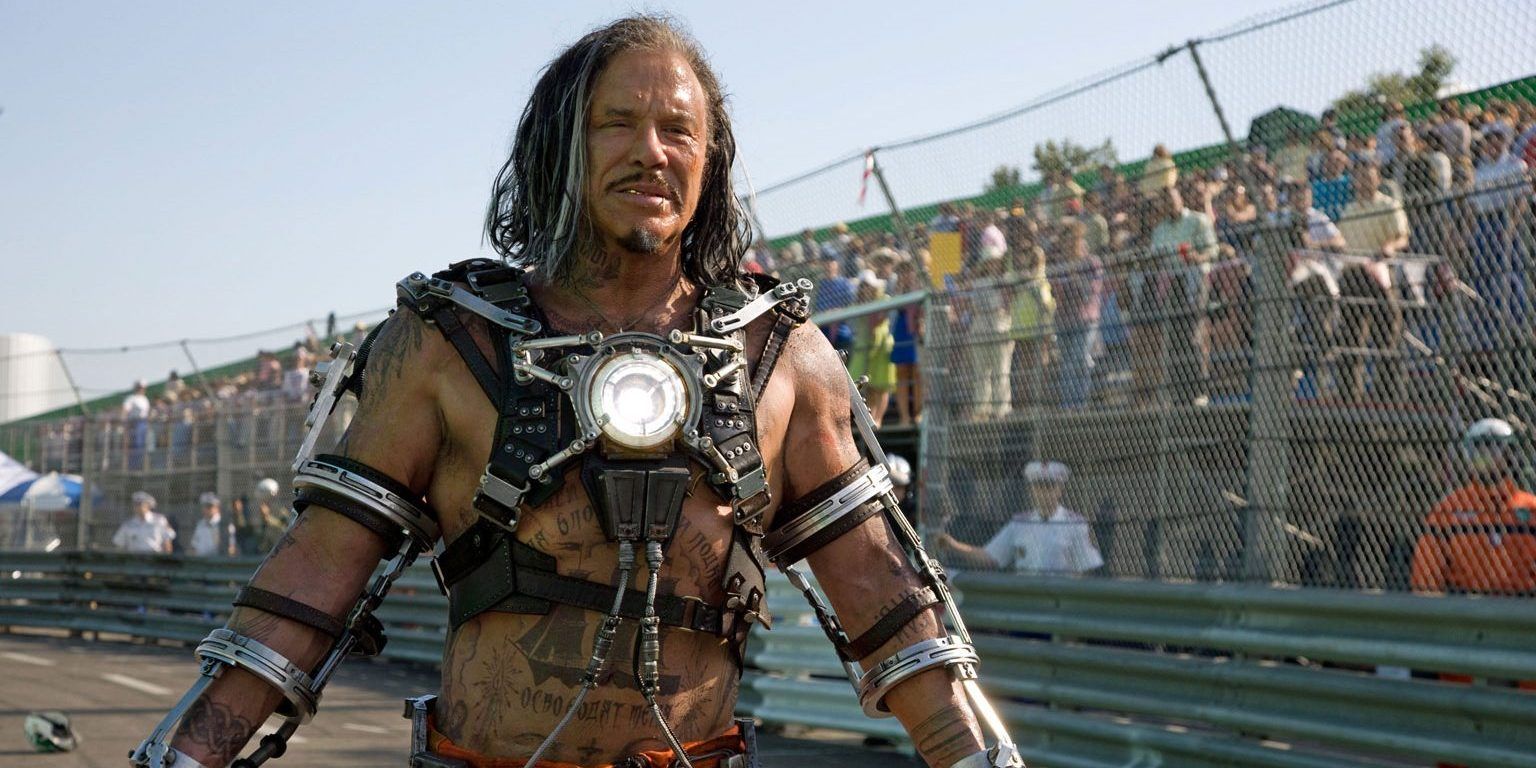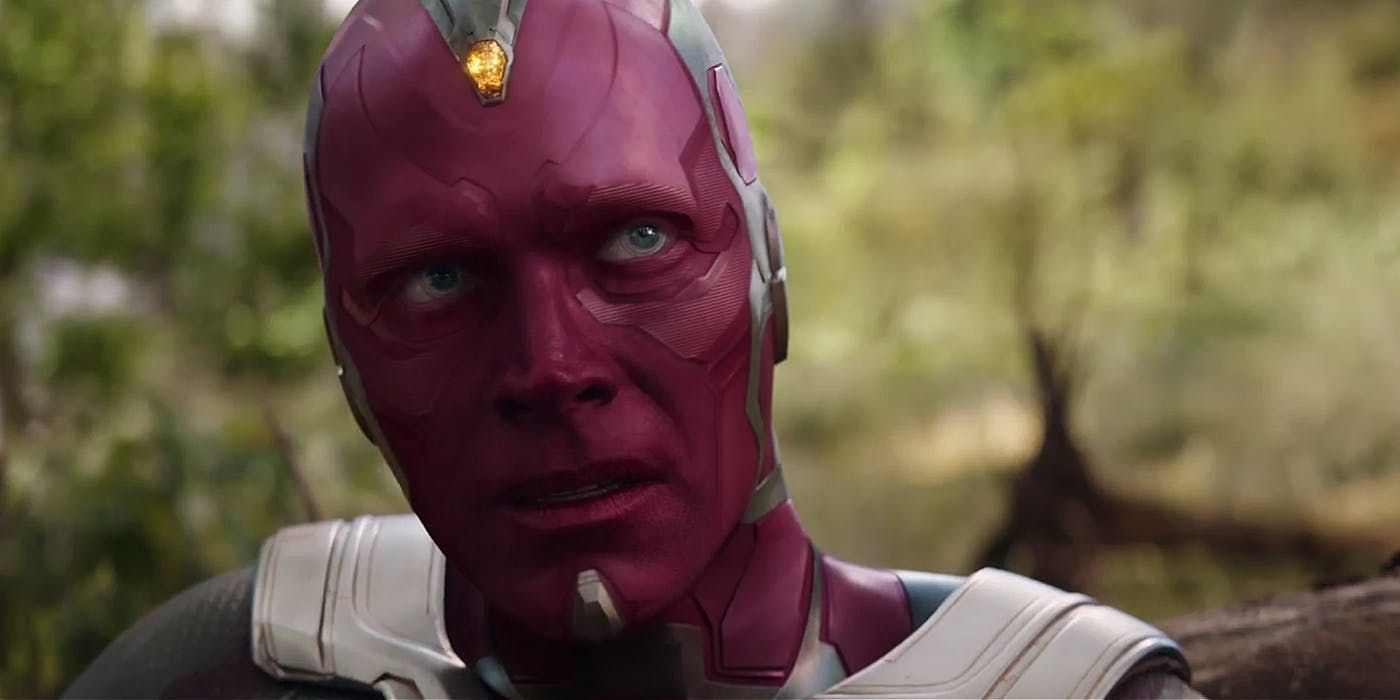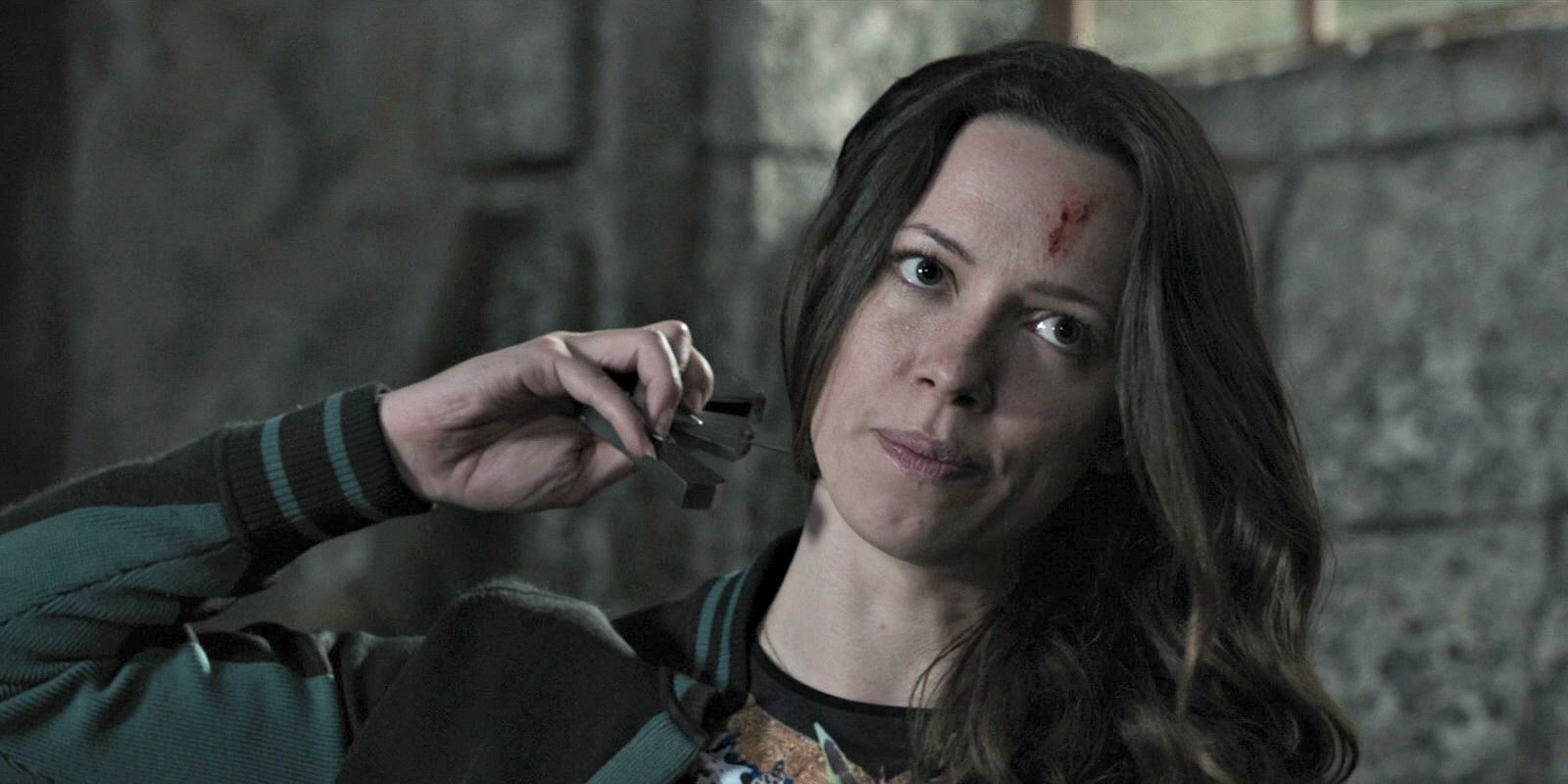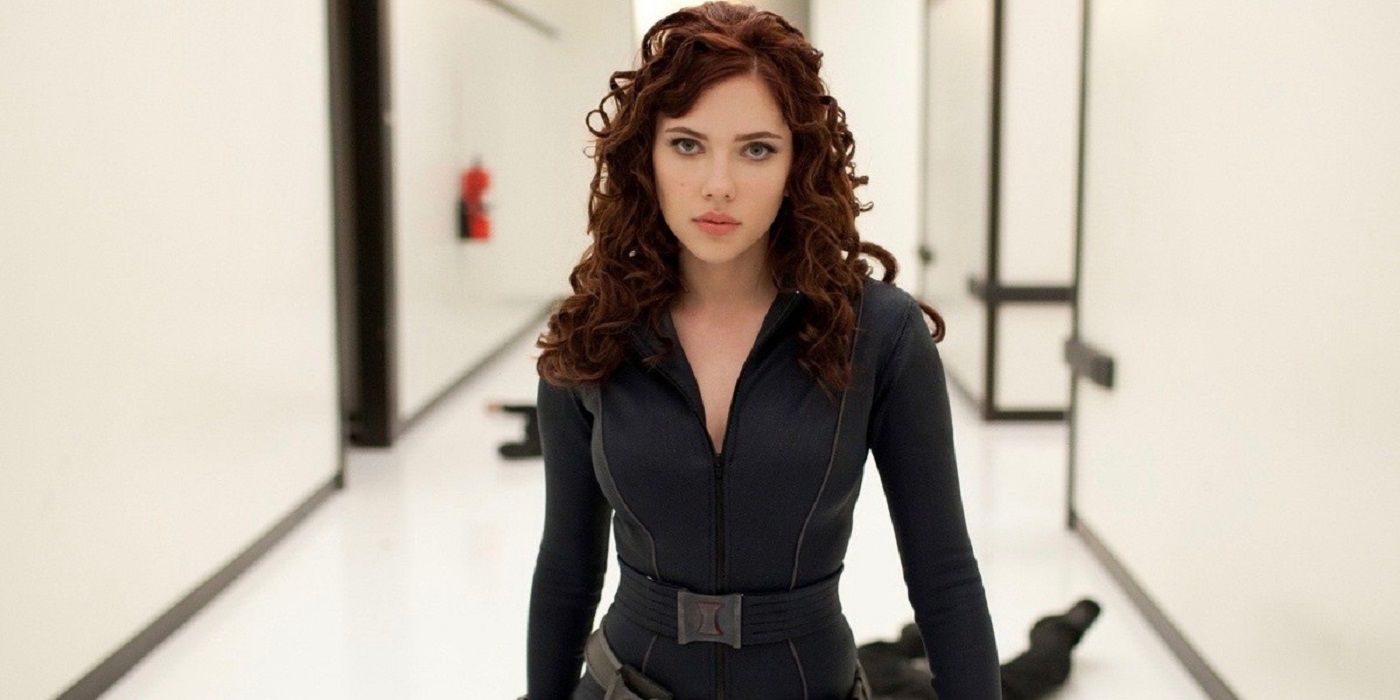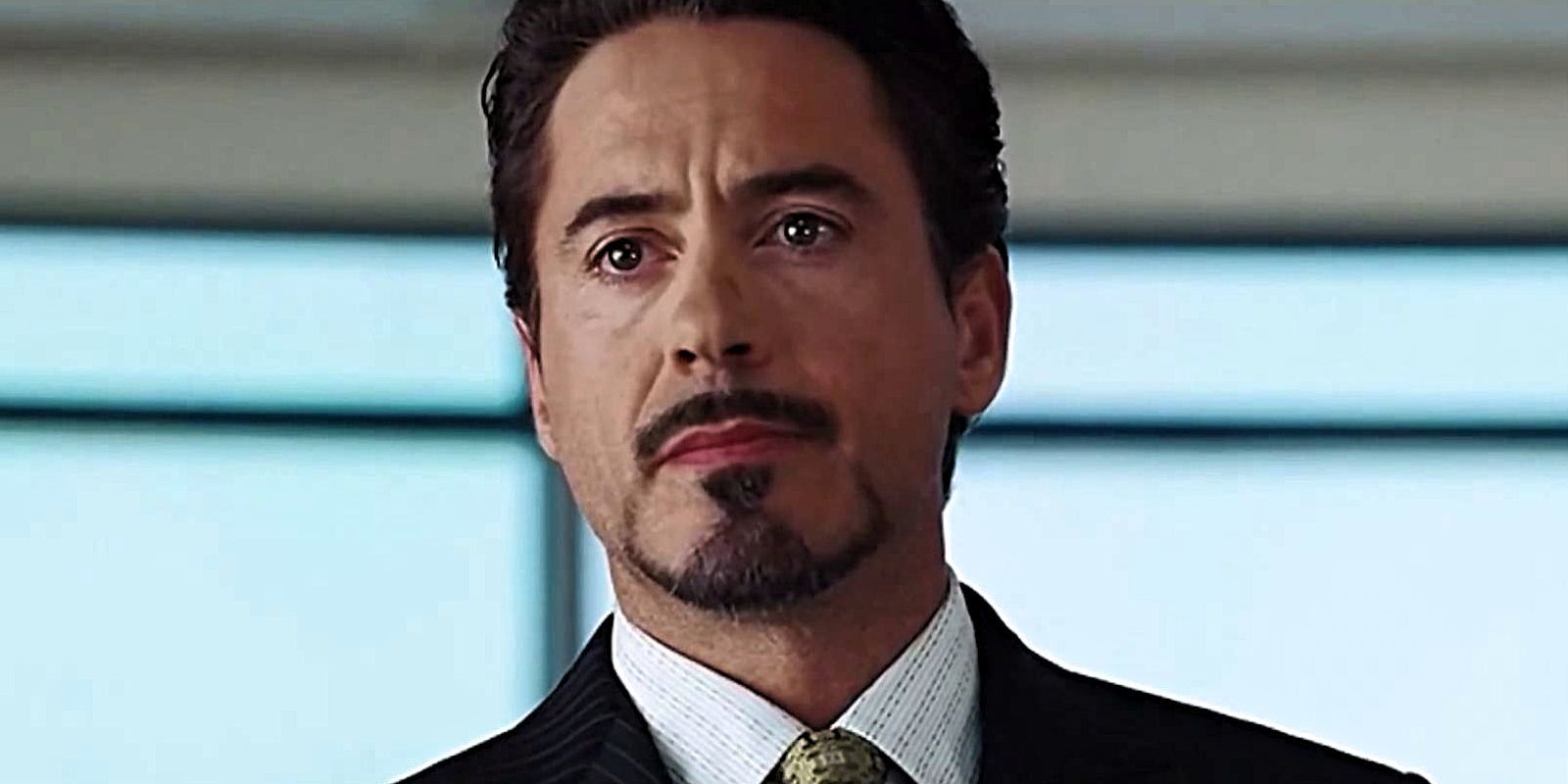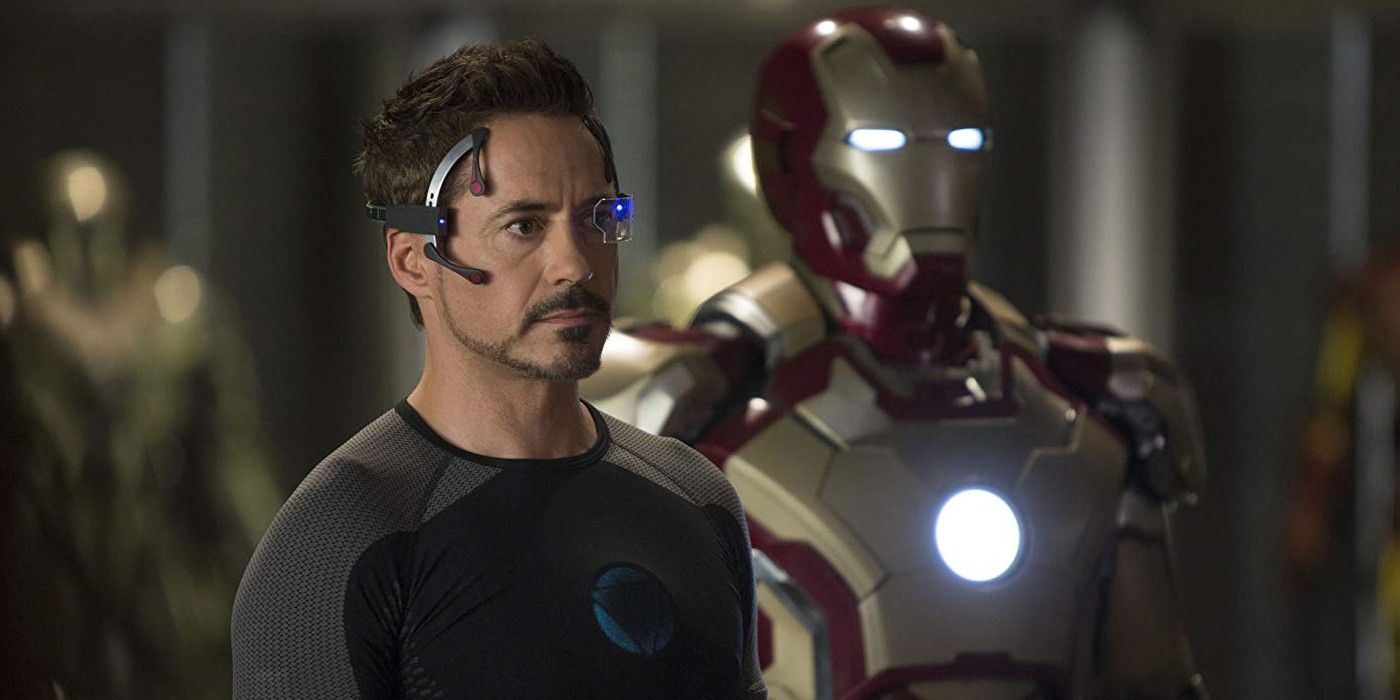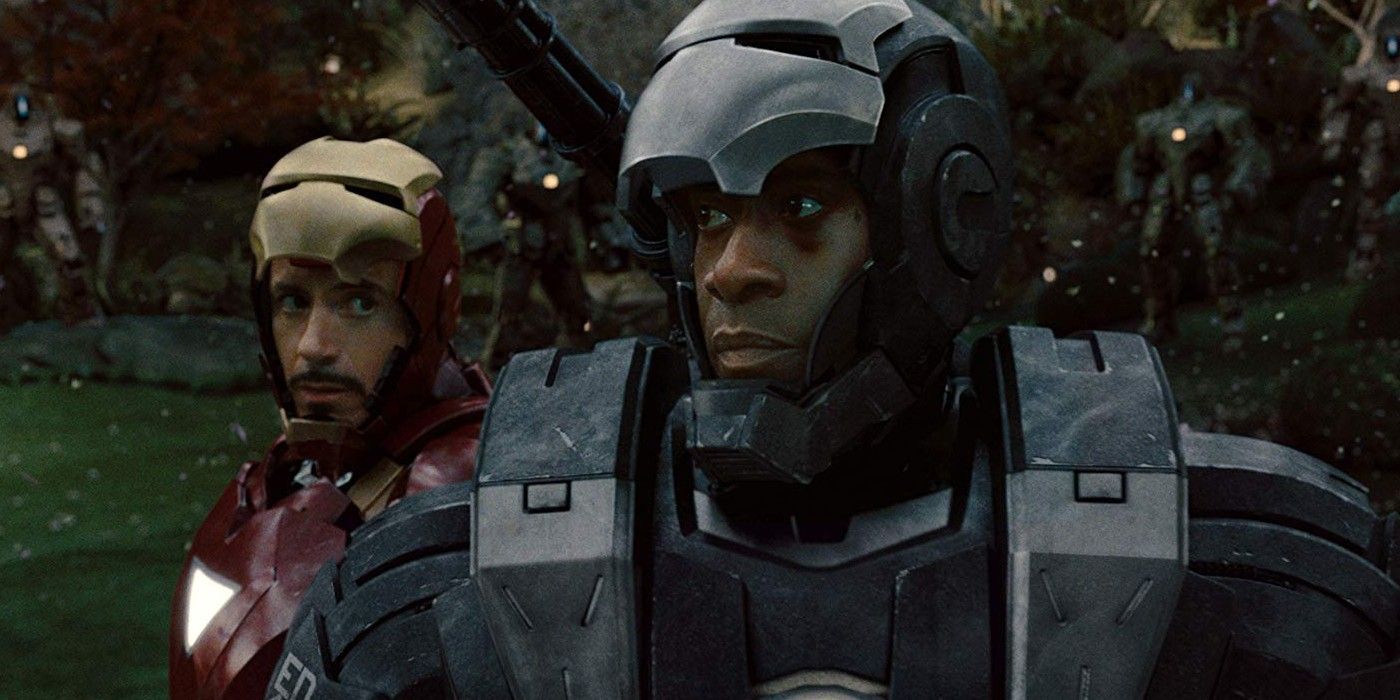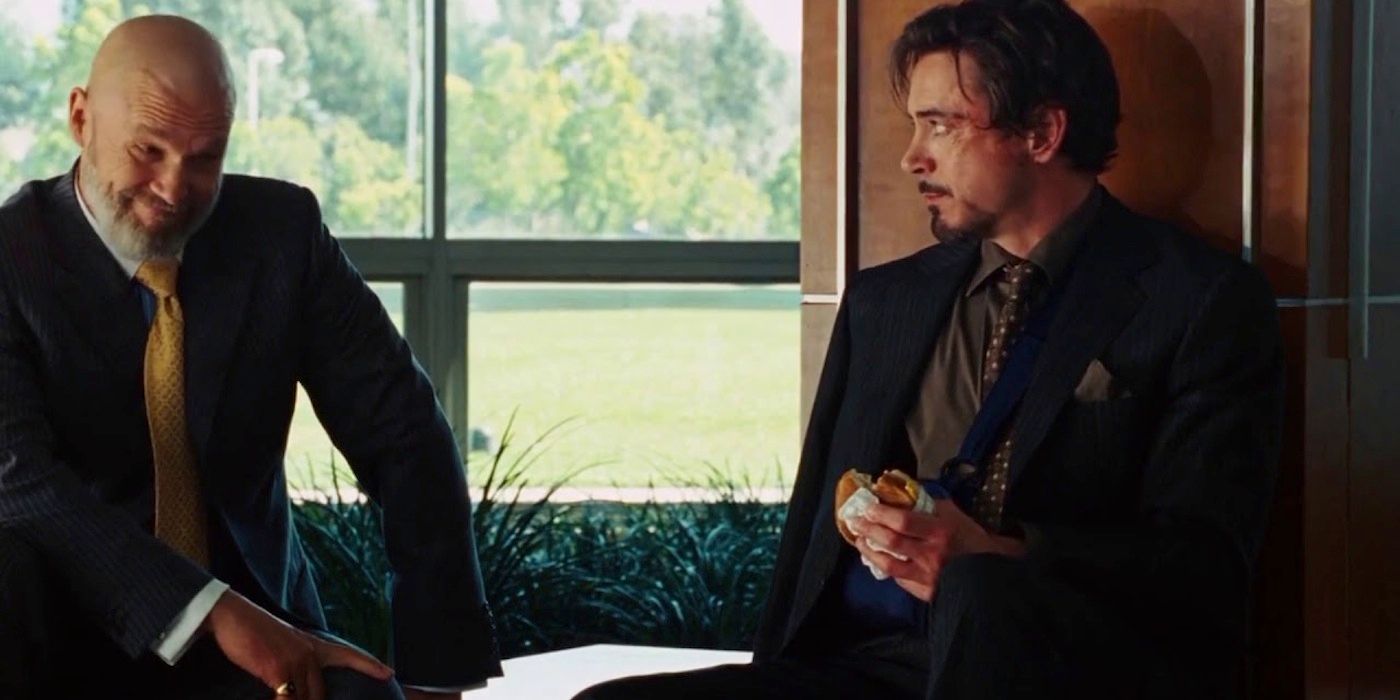Tony Stark is arguably the most important character in the Marvel Cinematic Universe. 2008’s Iron Man kicked off the franchise and it got a standalone sequel that built the wider universe long before Earth’s mightiest heroes had even assembled. This meant that Iron Man was the first character to complete his solo trilogy, wrapping it up just one year after the first Avengers movie was released — before anyone else had even enjoyed more than one solo movie. Creating a cinematic universe from scratch is no easy feat, so here are 10 Behind-The-Scenes Facts About The Iron Man Trilogy That We Love 3,000.
Most of the dialogue in Iron Man was improvised
Since the main focus of Iron Man’s pre-production was on hammering out which scenes would be necessary for the plot, the actual script wasn’t complete when they started shooting. The filmmakers knew all the beats they needed to hit in each scene, so they just let the actors play around with it. (This is probably the first and last MCU movie to be made in the same way as a Curb Your Enthusiasm episode.) Robert Downey, Jr. was the quickest with his lines, and often asked for multiple takes to try new things. Gwyneth Paltrow, on the other hand, struggled to match Downey’s energy with a quippy response.
Robert Downey, Jr. pushed for Gwyneth Paltrow to have action scenes in Iron Man 3
The original script for Iron Man 3 featured Pepper Potts in yet another damsel-in-distress situation, needing to be saved by Tony Stark. Robert Downey, Jr. pushed for Gwyneth Paltrow to finally have some action scenes in the movie, and producer Kevin Feige agreed. Pepper still becomes a damsel in distress in the third act, but due to her Extremis infection, she also shows up at the last second to save Tony and destroy Killian. Feige said this was to maintain the audience’s skepticism over whether Pepper was in danger or whether she was actually Tony’s savior. In the end, she’s kind of both.
Mickey Rourke personally paid for Ivan Vanko’s gold teeth and pet bird
When he was cast to play Ivan Vanko, aka the villain Whiplash, in Iron Man 2, Mickey Rourke came up with most of Vanko’s characteristics himself. Although his Russian accent is shaky at best, it turns out it was actually the actor’s own idea to do it.
It was also his idea for Vanko to have gold-plated teeth and a pet cockatoo that he wouldn’t go anywhere without, and Rourke even paid for the gold teeth and the bird out of his own pocket, despite the fact that Iron Man 2’s generous $200 million production budget probably could’ve accommodated it.
Paul Bettany recorded all his lines for Iron Man in two hours
Paul Bettany recorded all of his lines as J.A.R.V.I.S. for the first Iron Man movie in just two hours. The actor would later say that it felt like robbery, because he got a lot of money for two hours’ work and then went straight on vacation with his wife, Jennifer Connelly (who, funnily enough, would end up voicing another Marvel A.I. in Spider-Man: Homecoming). Bettany didn’t even watch Iron Man — he didn’t think much of it. Of course, his role would get significantly expanded later in the franchise, especially when J.A.R.V.I.S. was turned into the Vision and required Bettany’s physical presence to play him.
Marvel nixed a female villain from Iron Man 3
Ike Perlmutter, who used to run Marvel before Kevin Feige went over his head and did a much better job in his position, excised a female villain from Shane Black’s early drafts of Iron Man 3, because he believed that kids wouldn’t buy a female action figure. So, Rebecca Hall’s Maya character was cut down to the point where it didn’t even make sense why she was there, and Guy Pearce’s Killian character was expanded to become “the real Mandarin.” It’s worth noting that Perlmutter refused to make Black Panther and Captain Marvel when he was in charge, so he’s not a very forward-thinking guy. And Marvel didn’t even end up making a Killian action figure.
Scarlett Johansson wanted to play Black Widow so badly that she dyed her hair before she was cast
Apparently, Scarlett Johansson was so eager to play Natasha Romanoff in the MCU, starting with a supporting appearance in Iron Man 2, that she dyed her hair red for the role before she’d even been cast. Natasha’s hair color and style would change a lot over the next nine years. It remained red through The Avengers, then become straighter and take on a lighter shade in Captain America: The Winter Soldier, and eventually, in Avengers: Infinity War, it changed color entirely, to blonde. In Avengers: Endgame, she got red highlights in her blonde hair (mostly to sell the five-year time jump).
Robert Downey, Jr. ad-libbed his “I am Iron Man” line
It’s pretty widely known that Robert Downey, Jr. improvised his “I am Iron Man” line from the end of Iron Man. (Extras at the press conference were told that it was a dream sequence to prevent spoilers from getting out.) Kevin Feige allowed it into the final cut and it drastically changed the movie they’d planned.
It arguably made the movie better. It introduced Tony Stark’s ego as an obstacle to Nick Fury’s intentions for secrecy. Feige also credits the moment for the MCU doing away with secret identities. Only Spider-Man hides his identity, and even that’s out in the open now.
The first cut of Iron Man 3 was 3 hours and 15 minutes long
Shane Black’s rough cut of Iron Man 3 clocked in at a whopping runtime of 3 hours and 15 minutes. The final cut came down to 2 hours and 10 minutes, so a lot was removed. Black had to remove a ton of plot elements, including an opening montage of flashbacks from Tony Stark’s youth. At one point, he considered jumping right into the action and opening with Tony crash-landing in Tennessee. Another idea was to show Tony clearing up a bunch of landmines bearing the Stark Industries logo, to metaphorically prepare the audience for the movie’s explosive plot developments.
Marvel interfered constantly during the making of Iron Man 2
While Jon Favreau was making Iron Man 2, he faced constant interference from his corporate overlords at Marvel Studios. This is pretty obvious from how the movie plays — it seems a lot more interested in setting up the wider MCU than telling its own story. Marvel forced Favreau to rewrite a lot of the script while he was still shooting, so that they could include more in the subplot involving S.H.I.E.L.D.’s operations in preparation for The Avengers. This grew so exhausting that it led Favreau to turn down the opportunity to direct Iron Man 3 a couple of years later.
Robert Downey, Jr. had a strange reason to promote Burger King
When he returns from Afghanistan in the first Iron Man movie, Tony Stark asks for a press conference and an American cheeseburger. Next, he’s seen giving the press conference with a sandwich from Burger King in his hand. As it turns out, Robert Downey, Jr. had a strange reason to promote Burger King. In an interview with Empire magazine, Downey claimed that Burger King is responsible for getting him clean. He was sitting in his car, which was full of drugs, and he ate a burger that was so revolting that it caused him to rethink his life and dump all the drugs in the ocean. Then, he promptly checked himself into rehab.

